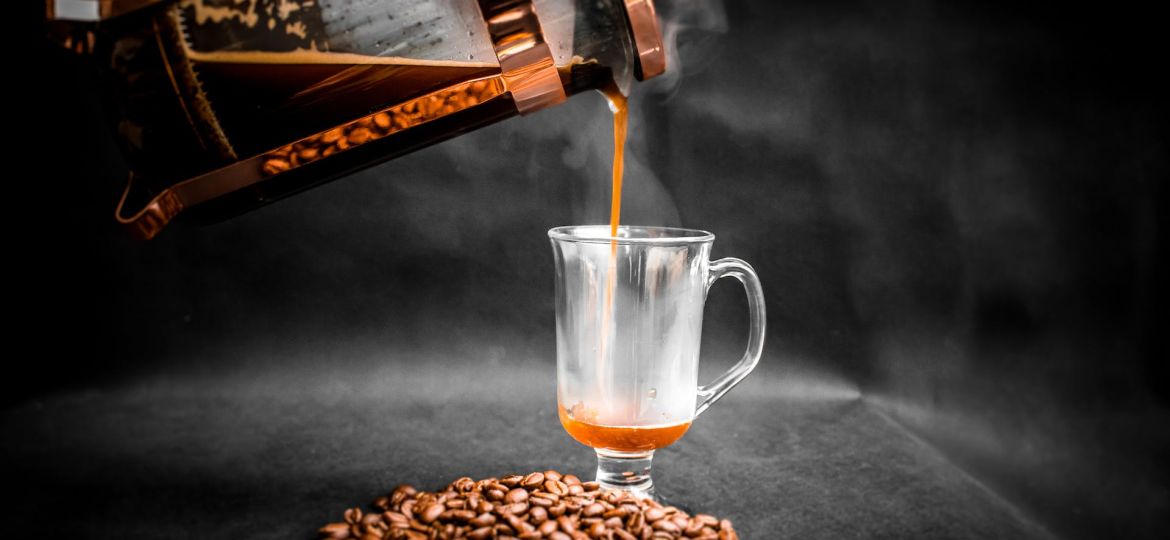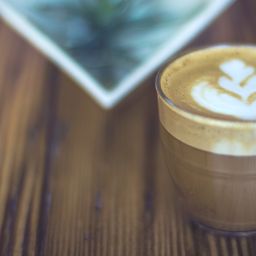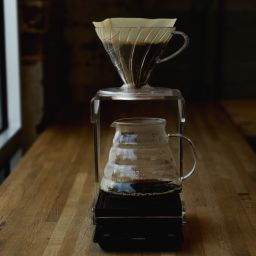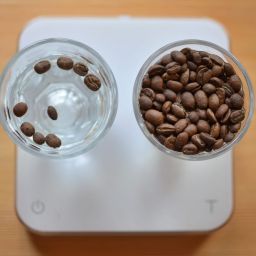
French Press coffee, a beloved method for brewing a rich and robust cup, has a fascinating history. It’s believed to have originated in France in the 19th century, quickly gaining popularity across Europe and eventually worldwide. What sets the French Press apart is its simplicity and the depth of flavor it extracts from the coffee beans.
- Brief history: The French Press, also known as a press pot or plunger pot, was first patented by an Italian designer in 1929. However, its roots trace back to France.
- Popularity: Its popularity soared due to its ability to produce a more flavorful and full-bodied coffee compared to other brewing methods.
The French Press is unique because it allows for full immersion brewing, where coffee grounds and water are in direct contact. This method extracts more oils and flavors from the beans, offering a distinct taste that can’t be replicated by drip or espresso machines.
What is a French Press?
A French Press is a simple yet elegant coffee brewing device. It consists of a cylindrical beaker and a plunger with a fine mesh filter.
- Description: The beaker is typically made of glass, allowing you to see the brewing process. The plunger, equipped with a mesh filter, separates the coffee grounds from the brewed coffee.
- Material Variations: While glass is common, French Presses also come in plastic and steel. Each material offers different benefits, like durability and heat retention.
The Science Behind French Press Coffee
The French Press brewing method is both an art and a science. It involves steeping coarse coffee grounds in hot water and then separating the grounds from the liquid coffee using the plunger.
- Brewing Process: The coffee grounds are fully immersed in water, allowing for a thorough extraction of flavors.
- Grind Size: A coarse grind is essential to prevent grounds from slipping through the mesh filter.
- Water Temperature: Ideally between 195°F to 205°F, hot enough for extraction but not boiling.
- Brewing Time: Typically 4 minutes, but can be adjusted for personal preference.
The key to the French Press is the immersion brewing method. Unlike drip coffee, where water passes through the grounds, the French Press allows the water and coffee to mingle for an extended period. This results in a richer, fuller-bodied coffee. The grind size, water temperature, and brewing time are crucial factors in achieving the perfect cup.
The Brewing Process
Choosing the Right Coffee Beans
Selecting the right beans is crucial for a great French Press coffee. The beauty of this method is its versatility with different coffee types.
- Bean Types: For French Press, you want beans that are rich and full-bodied. Single-origin beans are great for highlighting unique flavor profiles.
- Impact of Origin and Roast: The origin of the bean can influence its acidity, sweetness, and body. A darker roast is typically preferred for its robust flavor, ideal for the French Press method.
The bean’s origin and roast will significantly affect the taste of your coffee. Experiment with different beans to find your perfect match.
Grinding Your Coffee
Grinding your coffee correctly is key to a perfect French Press brew.
- Grind Size: The grind should be coarse, resembling sea salt. Too fine, and you’ll get a bitter cup; too coarse, and the coffee will be weak.
- Grinder Recommendations: A burr grinder is the best choice for a consistent coarse grind. Blade grinders can work but often result in uneven grinds.
A consistent grind size ensures even extraction and a balanced flavor.
The Perfect Coffee-to-Water Ratio
Getting the coffee-to-water ratio right is essential for the ideal strength and flavor.
- Measuring Coffee and Water: A good starting point is a 1:15 ratio of coffee to water. That’s about 67 grams of coffee per liter of water.
- Adjusting Ratios: For a stronger brew, increase the coffee ratio. For a lighter cup, use less coffee.
The ratio can be tweaked to suit your taste preferences. Remember, consistency in measurement is crucial for replicating your perfect cup every time.
Brewing Step-by-Step
Brewing the perfect French Press coffee is like a little morning ritual. Here’s how to nail it every time:
- Boil Your Water: Start by boiling fresh, cold water. If you’re a stickler for details, aim for water between 195°F to 205°F.
- Preheat Your French Press: Pour some hot water into the French Press to warm it up, then discard the water.
- Add Coffee Grounds: Put your coarse-ground coffee into the press.
- Start the Brew: Pour hot water over the coffee grounds, filling up to the desired level. Stir gently to ensure all grounds are wet.
- Let It Brew: Place the lid on the press with the plunger pulled all the way up. Let the coffee steep for about 4 minutes.
- Consistency is Key: Use the same amount of coffee and water each time.
- Avoid Common Mistakes: Don’t use boiling water as it can burn the coffee, and don’t skip preheating the press.
Timing Your Brew
The brewing time in a French Press is crucial for extracting the perfect flavor.
- Ideal Time: Generally, 4 minutes is the sweet spot for brewing.
- Flavor Impact: Brewing for less than 4 minutes can lead to under-extraction, making the coffee taste weak. Over 4 minutes, and you might get over-extraction, leading to bitterness.
Plunging Techniques
Plunging is the final step in the French Press process and it’s more important than you might think.
- The Right Way to Plunge: After your brew time is up, hold the handle of your press firmly and push the plunger down slowly and steadily. It should feel smooth, not too hard to press.
- Avoiding Errors: Don’t plunge too fast or with too much force. This can stir up the grounds, leading to a gritty cup of coffee.
A proper plunge ensures that the coffee grounds are evenly separated from the brew, resulting in a clean and clear cup of coffee. Remember, patience is key here!
FAQs
Let’s tackle some of the most common questions about brewing French Press coffee:
- Can I use regular coffee grounds for French Press?
- Ideally, no. French Press requires a coarser grind than what you’d use for drip coffee. Using a fine grind can lead to over-extraction and a bitter taste.
- How much coffee should I use for my French Press?
- It depends on your taste. A good starting point is a 1:15 coffee-to-water ratio. Adjust according to your preference for stronger or weaker coffee.
- Why is my French Press coffee bitter?
- It could be a few things. Over-brewing, too fine a grind, or water that’s too hot are common culprits. Experiment with these variables to find your sweet spot.
- Can I reuse French Press coffee grounds?
- Technically, yes, but it’s not recommended. Reused grounds will produce a much weaker and less flavorful cup.
- How do I clean my French Press?
- It’s pretty simple. Disassemble the press, wash all parts with warm, soapy water, and make sure to remove all coffee grounds. For a deeper clean, you can use vinegar or a coffee equipment cleaner.
The Perfect French Press Brew
Brewing coffee with a French Press is an art that’s easy to master with a bit of practice. Remember these key points:
- Use coarse-ground coffee and experiment with different beans to find your favorite.
- Stick to the 1:15 coffee-to-water ratio as a starting point and adjust to taste.
- Aim for a brew time of around 4 minutes, but feel free to experiment.
- Plunge slowly and steadily to avoid a gritty cup.
The beauty of the French Press is in its simplicity and the rich, full-bodied coffee it produces. Don’t be afraid to tweak the process to suit your taste. Each cup is an opportunity to refine your brewing skills and enjoy a delightful coffee experience. So, grab your French Press, experiment, and most importantly, enjoy every sip!









